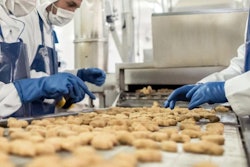
The 2019 Annual Meeting of the Association of American Feed Control Officials (AAFCO) was held August 5–7 in Louisville, Kentucky, USA. Some of the deliberations during the Pet Food Committee session were reported in last month's column. However, activities during other sessions at the AAFCO meeting also impact the pet food industry.
General session pet-related items
In the Association Business Meeting (aka, the general session), several amendments to regulations with application to pet foods were approved by the full membership. One clarifies that the words "Guaranteed Analysis" be expressly used as the header for that section of the label. Another requires that "Metabolizable Energy" or "ME" be expressly included in the calorie content statement. Two other amended regulations refine the required information for probiotic and enzyme guarantees. Many pet food manufacturers are already in conformance with these rules as amended, so these changes are unlikely to have a very significant effect for most in the industry.
Also in the general session, revision to the feed term "canned" was approved. The change makes clear that the U.S. Food and Drug Administration (FDA) regulations pertaining to "low acid canned foods" are equally applicable to items in other forms of packaging, such as trays and pouches. As a practical matter, this has always been the interpretation anyway, so again, impact on the industry should be minimal. Two new feed terms that were rejected by the full AAFCO membership were "slaughter" and "common or usual." Whether they will return in revised form for further consideration at future meetings remains to be seen.
Finally, the full membership agreed to eliminate several "Statements for Uniform Interpretation and Policy" (SUIP). As policy and not regulations, these statements are not amenable to effective enforcement by states, so AAFCO is reviewing them with the goal to move those it can into model regulation. Those statements that were deleted (e.g., policies re: non-protein nitrogen and raw leather residue) do not directly impact pet foods. However, those remaining will have to be reorganized, so the familiar "Policy Statement #27," which dictates labeling and registration exemptions for certain dog chews under specified conditions, will eventually be known by a new number.
Model pet food and specialty pet food regulations
The Model Bills and Regulations Committee voted to accept two proposed amendments to the Model Pet Food and Specialty Pet Food Regulations.
One clarifies that any exemption from the mandatory guarantees for some products is not an all-or-none deal. For example, an oil intended as a fatty acid supplement may be exempt from the requirement for crude protein and crude fiber guarantees, since it is neither intended nor does it provide significant amounts of these nutritive components. However, a minimum crude fat guarantee (along with guarantees as needed to support the claims for fatty acid content) would still be required.
The other amendment is to wholly delete AAFCO Regulation PF3(e). This was a "catch-all" product naming rule that in light of other changes to the regulations over the years was no longer applicable. The next step for these proposals will be to go to the AAFCO Board of Directors and eventually to the full membership for a final vote.
Ingredient definitions
The Ingredient Definitions Committee accepted new feed term definitions that would require the term "buffalo" be expressly qualified to identify species. The premise for this proposal is that consumers may be misled by the term, often presuming it to refer to the species most people in the U.S. think of when they hear "where the buffalo roam" or "Buffalo Bill," when in fact, the ingredient is often derived from a wholly different species from Asia. Moving forward, and assuming the feed terms eventually will be enacted by the full membership, the acceptable ingredient names will be "water buffalo" and "North American buffalo" (alternatively, "bison").
Of considerable debate in the Ingredient Definitions Committee session was a proposal to allow for "common names" of vitamins be declared in the ingredient list on pet food labels in lieu of their technical names (e.g., "vitamin B1" in place of "thiamine hydrochloride"). This stems from a finding in the Pet Food Labeling Modernization focus group that consumers preferred these simpler terms.
Although consumer understanding is of primary importance, it should not be done in a manner that would obfuscate if not eliminate critical information as to the sources of these vitamins. Many of those listed in the proposed table of vitamin ingredients were not even defined by AAFCO, while for others there was a presumption of nutritive equivalence between sources when such was not the fact. Hopefully, a compromise; e.g., for both the common and technical names to appear on the label, can be reached.
Briefly: Top 5 takeaways
- Activities during other AFFCO Annual Meeting sessions will have an impact on the pet food industry.
- In the general session, several amendments to regulations with application to pet foods were approved by the full membership.
- The Model Bills and Regulations Committee voted to accept two proposed amendments to the Model Pet Food and Specialty Pet Food Regulations.
- The Ingredient Definitions Committee accepted new feed term definitions that would require the term "buffalo" be expressly qualified to identify species.
- Read what happened during the Pet Food Committee’s session.


















